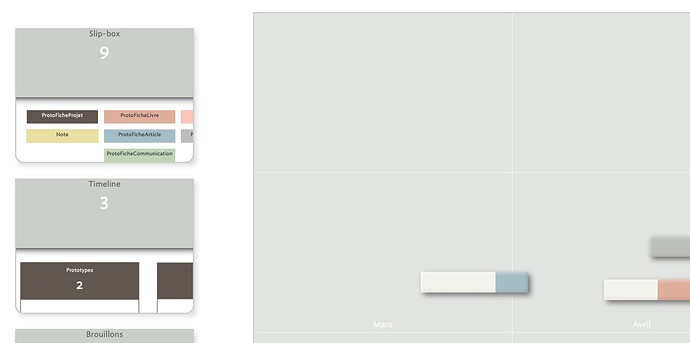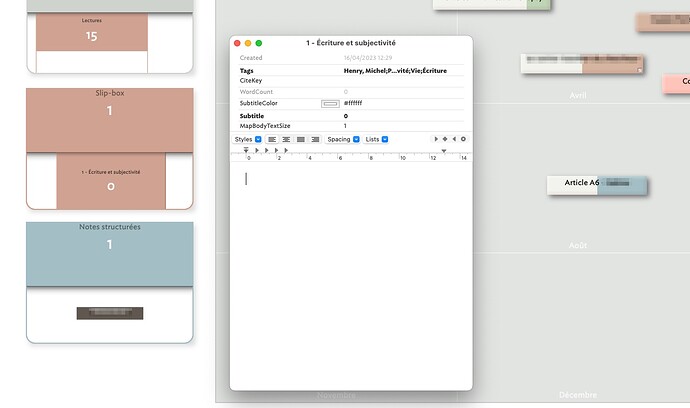Sure, we can do that. In your process above, you infer that Zettelkasten is a process of taking notes and that your preferred method of doing this is visual.
Let’s start next week’s session now by soliciting comments/answers to your question: “What does it mean to use Tinderbox as a zetellkasten tool?”
Here is my answer to this:
The typical definition of Zettelkasten does not define Zettelkasten; rather, it describes how it works instead what it means - Zettel is “card” and kasten is “box”; you codify information on a card and put it in the box. Codifying this information consists of each card having a unique number and then liking other cards to related cards by their individual numbers. Furthermore, as noted by Ahrens†, the information you place on the card should be related to one idea, written in your own words, and cited, i…e given provenance, a link to its source.
If the above is the “how” of Zettelkasten, for me, the what of Zettelkasten is “a systematic and systemic way of codifying one’s knowledge in a readily accessible knowledge repositorying so as to create contextually relevant moments of re-discovery that will ultimately streamline one’s ability to readily, delibreately, sustainably, support learning and the production of one’s contributions.”
I don’t think Luhmann created his process to simply collect knowledge; rather, I think he created it to help him be more efficient with the process of learning, insight creation, and the production of his outputs. By the time he died, he was a professor and a recognized contributor, and he produced over 60 cross-disciplinary books. I recall that the process gave him the ability to have joy and be in the moment. His end-game was joy and making a difference (i would think), not collection. I can’t emphasize these later points enough.
Moreover, I don’t think Luhmann’s process was terribly visual, although I suspect he, like many, would often take the cards out and place them on the floor to help him visually see a landscape of relationships. In the end, I think what Luhmann tapped into was a method appropriate for the available technology of his time to create a geo-temporal external data storage system that maps to our neo-cortex and the way our brains recall and apply information. What it did was help him learn and embrace abstraction. It was/is a system that facilitated the execution of deliberate, sustained, timely-corrected learning–basically the practical execution of Ericsson’s approach to becoming an expert‡
It is so easy to get sucked into a collection for collection’s sake, but what does that really give you? Not much. What you need to do is collect and curate, create and collaborate, and then contribute–make a difference–by getting your knowledge out there. In other words, find ways to collect and process information that facilitates learning and output generation. Tinderbox and accompanying foundational tech (macOS), standards, applications, AI, and processes can help you achieve this. It can be a cornerstone to your being able to make a difference.
So, for the meeting, we can certainly look at the map view as a way of helping facilitate learning; mind mapping and visual associations is a tried and true methods of learning and production. But let us not forget that visual association is just one tool in the toolbox (we all learn in different ways, and different tools are appropriate for different situations). Tinderbox has many views to help you get closer to your data; see this meet: Tinderbox Meetup April 9, 2023 Video: Export, AppleScript, Quantitative Analysis, TBX Views Review. And as discussed in other recent meetups, Tinderbox has capabilities to help you with curation (linking, citing, numbering), creating your own views with templates, and so much more. Personally, I think Tinderbox is the perfect toolset, the only real area I’m struggling with right now is how to effectively use it when collaborating with others–I have many methods I’m trying, and it is getting better, but I’m still missing the silver bullet.
Anyway, in conclusion, yes. Let’s have next week about Zettelkasten.
† Ahrens, S. (2017). How to Take Smart Notes: One Simple Technique to Boost Writing, Learning and Thinking – for Students, Academics and Nonfiction Book Writers. CreateSpace Independent Publishing Platform. Amazon.com
‡ Pool, R. (n.d.). Anders Ericsson: Dismantling the 10,000 Hour Rule. Retrieved September 6, 2021, from Anders Ericsson: Dismantling the 10,000 Hour Rule

